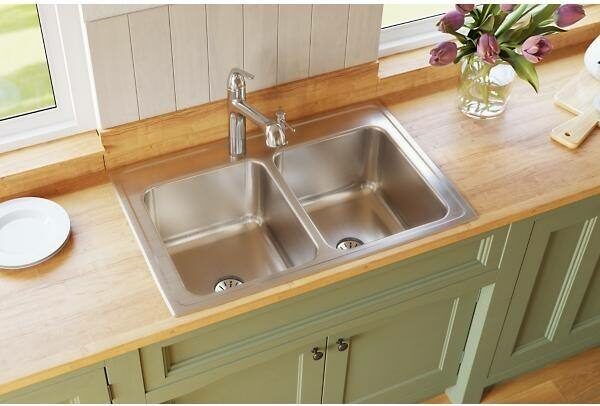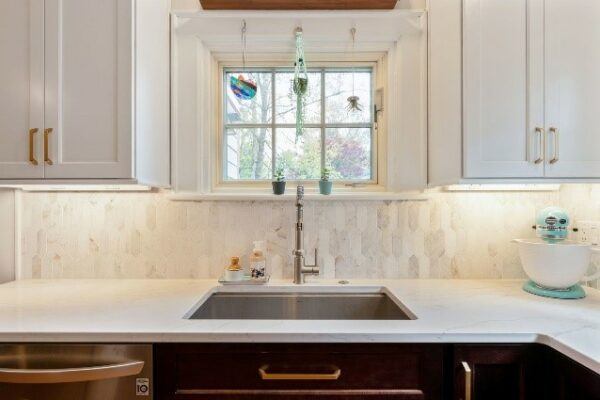How Do I Choose a Kitchen Sink
Aesthetics and function both need to meet in this element of your kitchen. Do you currently only have one small sink because the other side of your double bowl is always filled with dirty dishes? Do some family members (who shall not be named) throw silverware into it from across the room? Do you want your sink to have color? Useful accessories? There is a sink out there for you.
Let’s discuss the industry terms for how sinks are installed as this will affect the look of your sink. A “drop in” sink is one that is simply placed into an existing unfinished hole in the countertop. The sinks rests on top of the countertop, and thus has a lip around it. These are available in stainless, quartz or porcelain materials. Due to the lip, this style has fallen out of favor.

Undermount sinks do just that – attach to the underneath of the countertop. There is added cost as the counter hole must be nicely finished by the fabricator. Clips are used to secure the sink in place, which may interfere with items such as tilt out trays. These sinks are available in stainless, quartz or porcelain materials. Due to the weight of porcelain sinks, added support within the sink cabinet may be required. Undermount sinks are popular due to the clean look and ease of pushing things (i.e. crumbs or water) off of the counter into them.

Apron sinks have a front “apron” face, and are available in porcelain, fireclay, quartz and stainless. This style is used in more traditional kitchen styles. The apron eliminates the wooden cabinet front area that receives the most wear and water damage, so it can keep that sink cabinet looking better longer. Again, heavier sinks can require added support within the cabinet. There may be a caulk line around the apron if the cabinet is custom trimmed to the sink shape.

There are certainly other sink installation types such as wall mounted sinks, but the above are the basic three. Once you decide what installation look you prefer, you can consider materials. This is an excellent article on the various options.
Now, how many bowls do you want? A single bowl sink (as seen above) has a large work area, though you may have to train certain people to actually put their dirty dishes in the dishwasher. For those who like two sinks, they can be the same size or different. Struggling with hand washing your skillet as you cannot fit it all into the water? A low divide sink may be your answer as it doesn’t take much water to fill one side, and the handle can extend over the divide.
Don’t overlook the accessories if your sink manufacturers offers any. Bottom grids for draining dishes, chopping blocks that lay over the sink and colanders all allow you to utilize your new sink more effectively. Enjoy!
